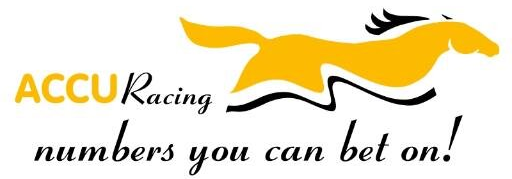How To Use The Numbers


One of the best features of The Numbers is that they can be used on several levels from basic to advanced. The most basic level is selecting the horse with the lowest number.
Step up a level and include pattern handicapping. Accuracing provides detailed explanation of patterns and trends to help you take your handicapping to the next level.
Accuracing.com recommends use of Brisnet, the Daily Racing Form or similar publication along side The Numbers. Although The Numbers can be used alone, information such as trainers, jockey changes, pace, or factors other than how fast the horse has run can be helpful in handicapping a race.


In races to date, those horses with the Best last race Numbers have won 31.1% of the time and have actually returned a flat bet profit of 7%.
Favorites in these same races have won 38.2% of the time (a bit more than the norm) and have returned a slight flat bet loss of 3%.
Even though we do not recommend this method of selection as a blind mechanical wagering system, we do feel like we need some way to measure the effectiveness of the Numbers.
To compile this list, we simply took the Best last race Number within the race (where there were ties, we excluded the race, however in the 6 races where there were ties, one of our horses won 5 times.)
We did not filter for surface or distance. We also did not consider likely bounce considerations, patterns, or horses that had a much faster previous race and appeared to be circling back.
Although we are quite encouraged by the win percentage, we think it is quite likely that you can significantly improve on this with some further understanding and more in-depth handicapping.
Next Step, Pattern Handicapping


Each Numbers Race Card represents a full race. Each horse entered is listed down the first (left) column. Next to each horse are the Numbers it has earned in its races over the past 18 months, with the horse’s last race closest to its name.
Across the top of the race card, you can see that each month is divided into week-ending columns. This allows you to see how often and how far apart the horse has raced.
- Start with the first horse. Find its Best (lowest numbers) and circle them moving to the right. This allows you to quickly see what a horse has been capable of running and determine its pattern. (Note: Take special care to note that the races are on today’s surface and to a lesser extent today’s distance/type). Repeat for each horse.
- This exercise will provide an accurate indication of how competive each horse’s last number, recent Bests, and pattern fits in with its competitors.
This determination is the single most important step in the initial Basic handicapping process. Many races are simply won by the horse with the lowest last race number — Frequently not the public betting favorite.
Most races are won by a horse that has run its Best within its last 3 races. This is very powerful, yet very easy to understand. Horses are generally either improving or declining. A horse running its Best recently is much more likely to continue to improve, or at least decline less than one that is tailing off.
A horse with a slower but forward moving number may be preferred over a faster rival that is declining. This situation occurs often and The Numbers points them out, often at generous odds.
